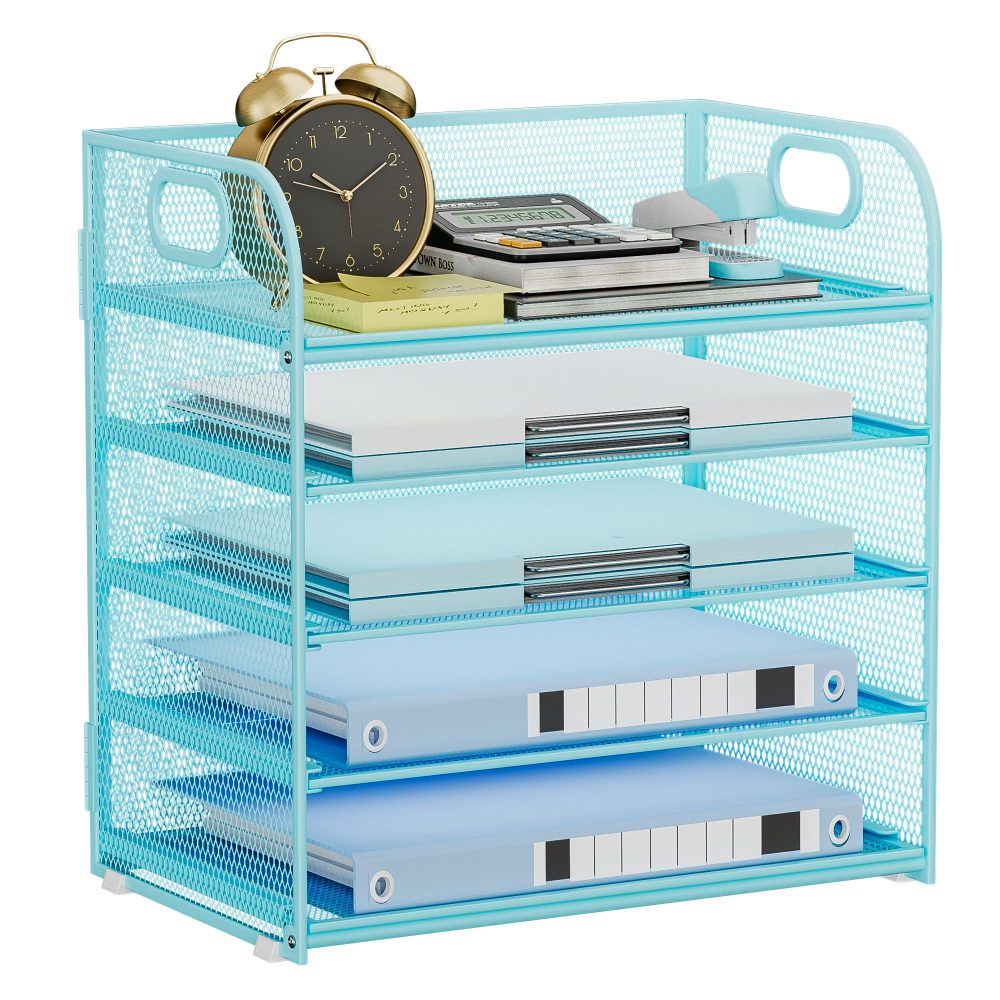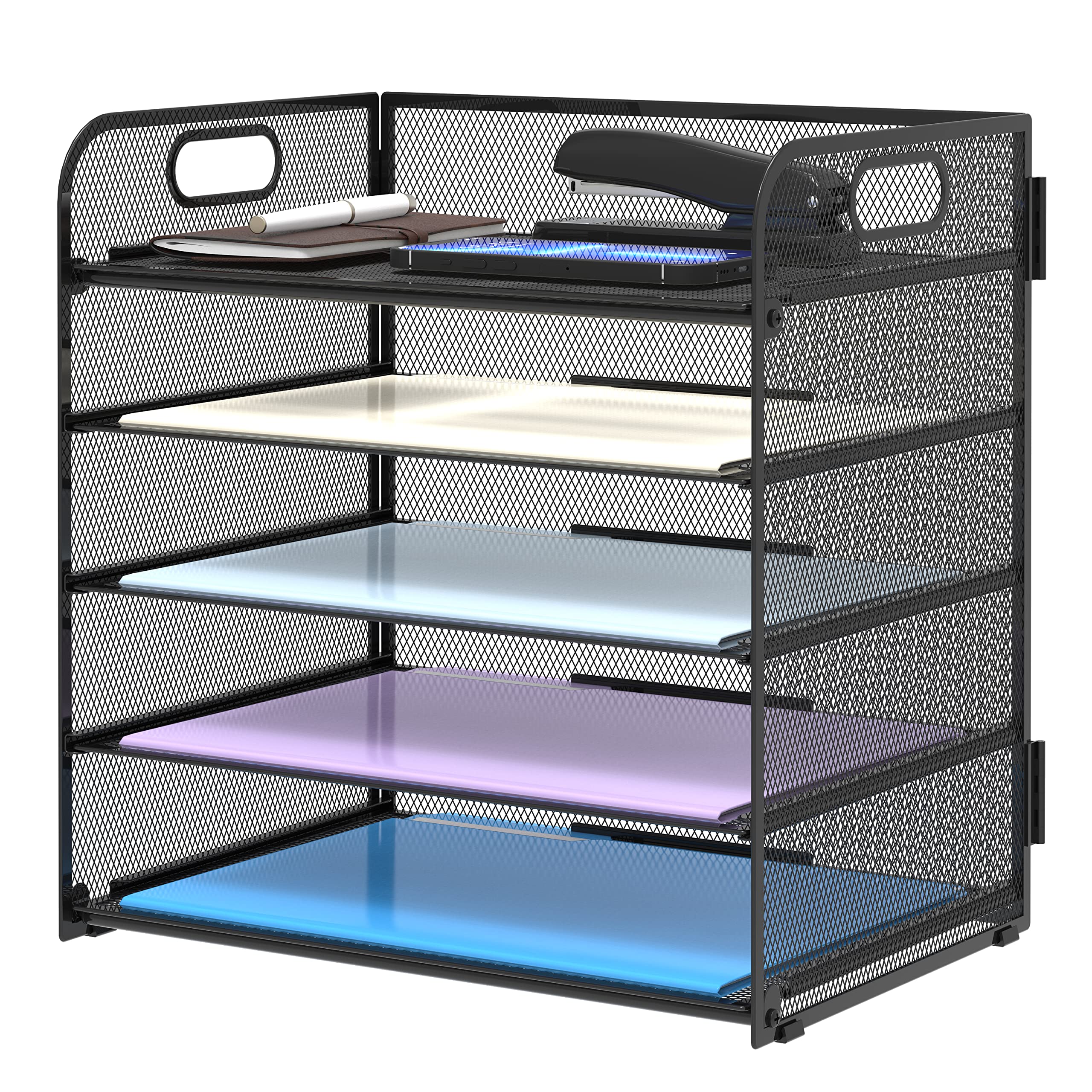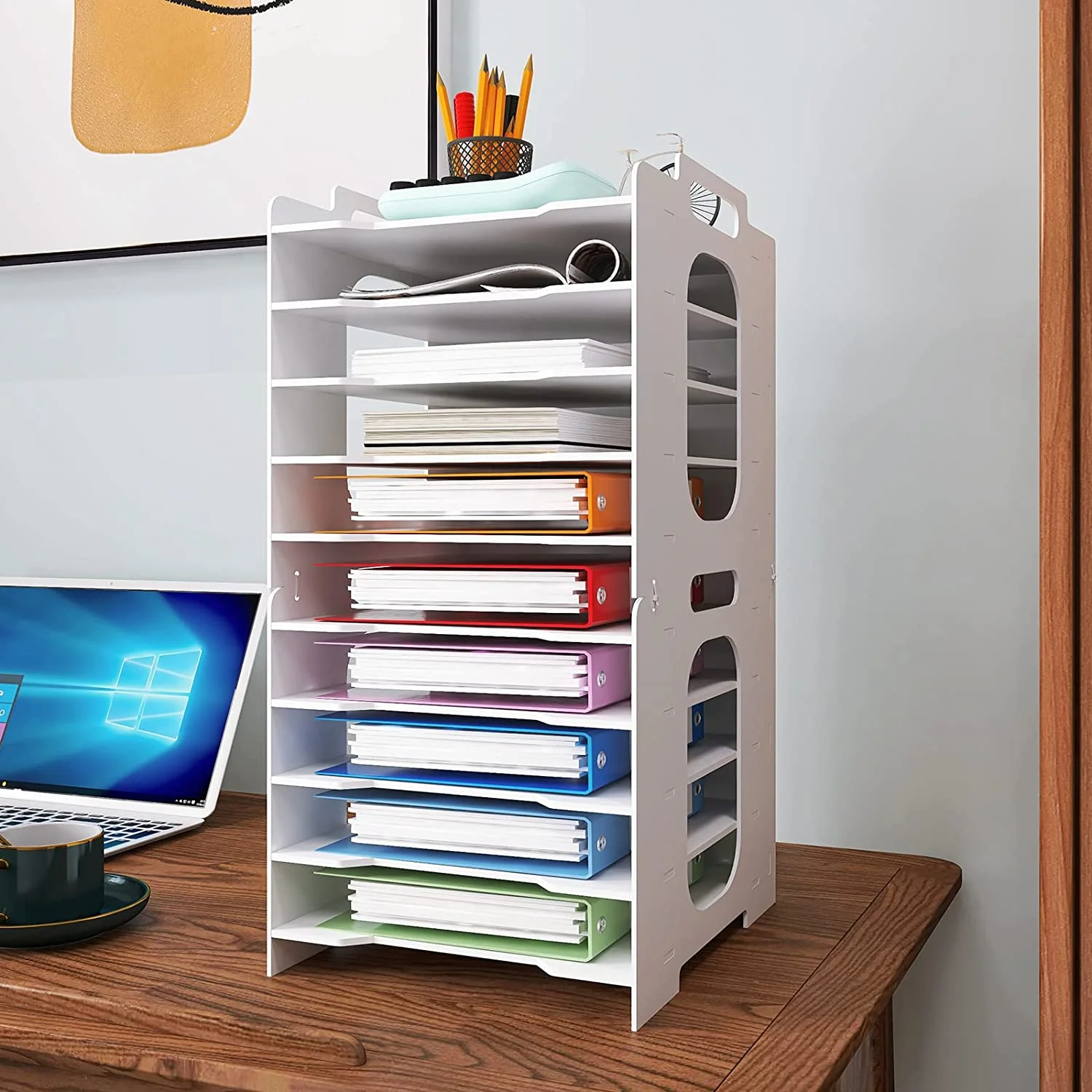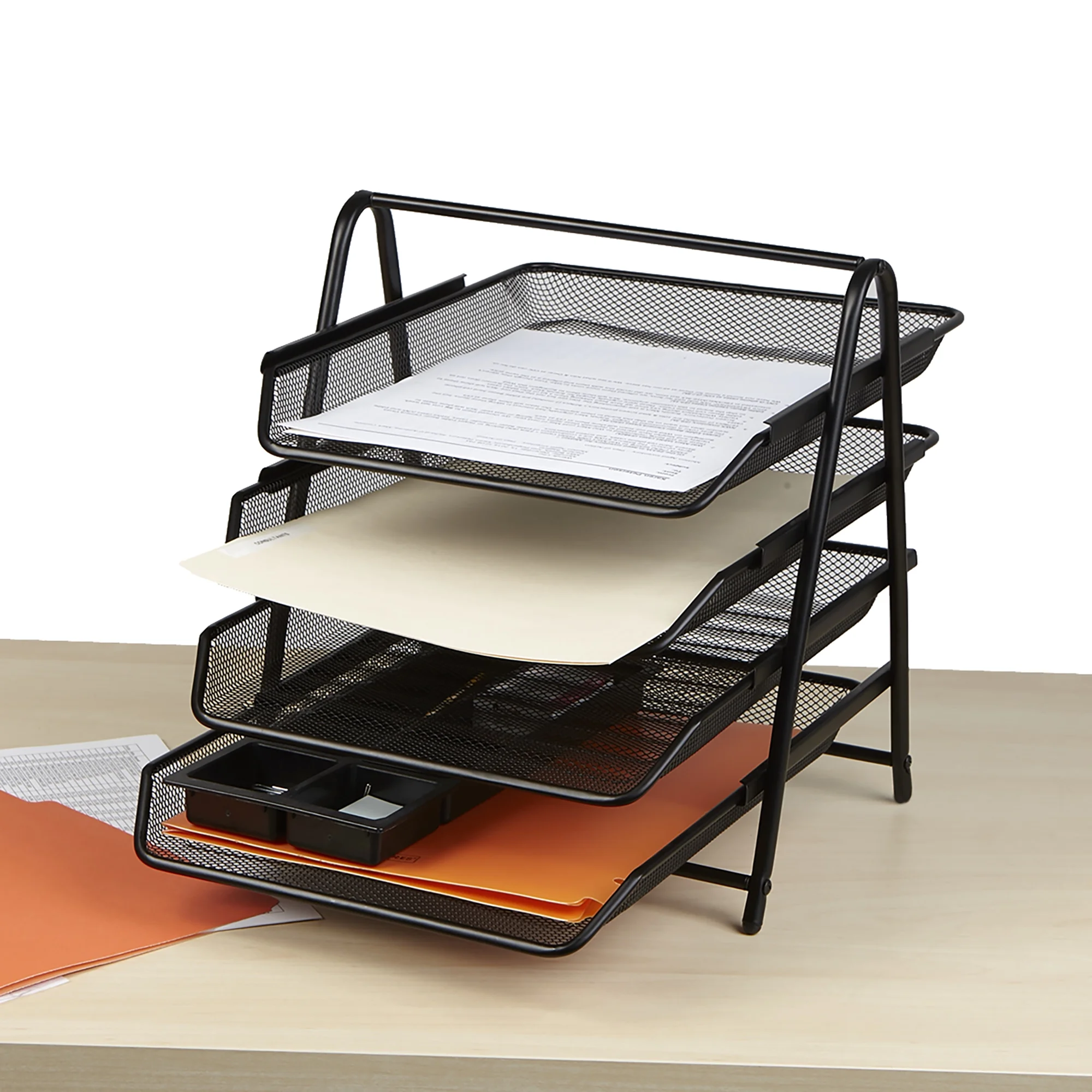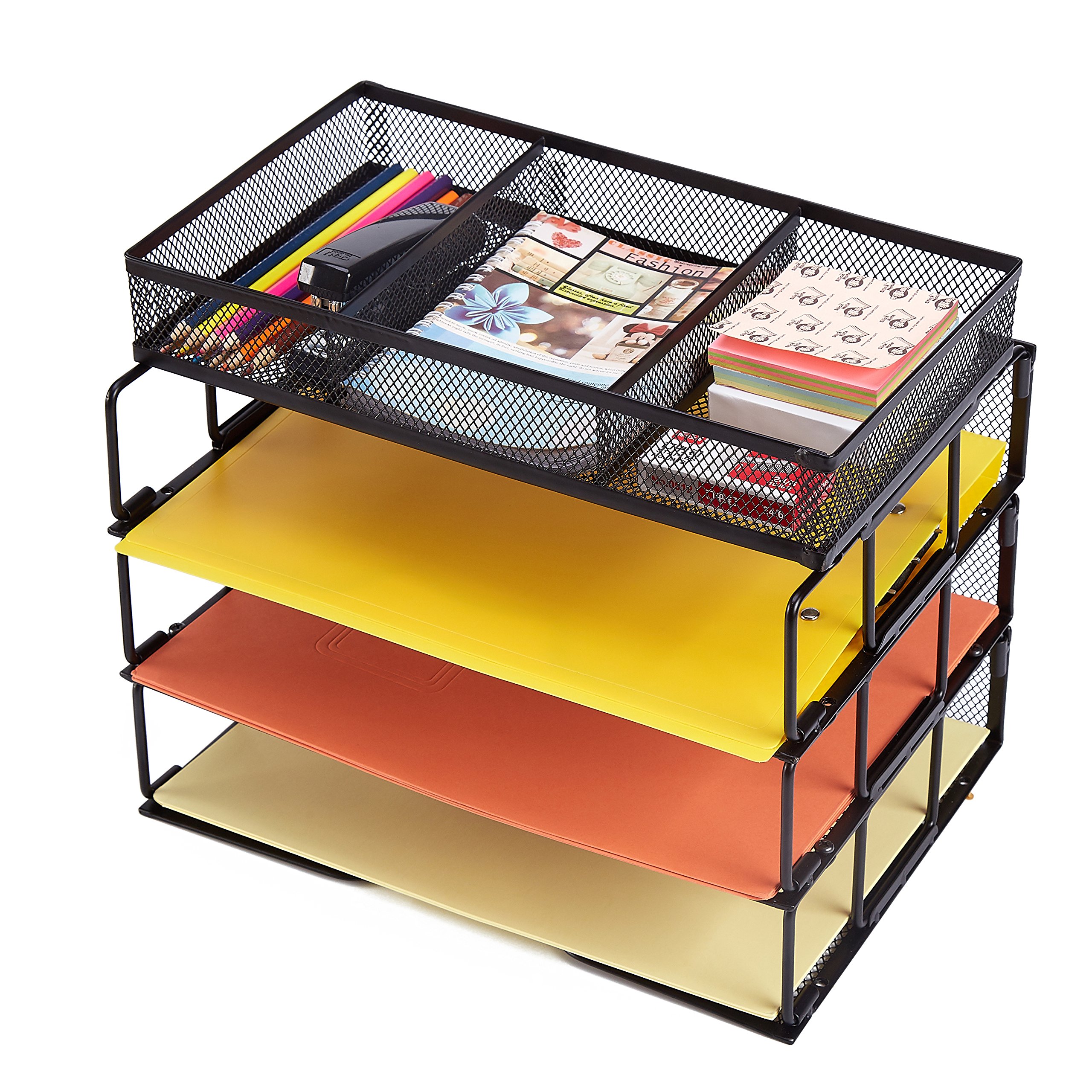Benefits of Organizing Desk Papers
Organizing desk papers is an essential step to creating a productive workspace. It helps maintain order and reduces unnecessary stress. By utilizing a desk paper organizer, you can save time and improve your work efficiency.
Reduced Clutter and Enhanced Productivity
A desk paper organizer keeps clutter under control. Neatly arranged papers make your desk look clean and professional. When everything has a designated spot, finding papers becomes faster and easier. This reduces time spent searching for important documents and enhances focus on tasks. When distractions like clutter are minimized, your productivity naturally improves.
Streamlined Workflow and Accessibility
Organized desk papers streamline your workflow. A clear categorization system allows for quick document retrieval. Items like receipts, invoices, or notebooks can be stored in specific sections of your organizer. This arrangement boosts accessibility, saving valuable time during the workday. When papers are sorted logically, you reduce mental fatigue and improve work efficiency.
Types of Paper Organizers
Choosing the right type of desk paper organizer depends on your needs and workspace. Below are four common types to consider:
Drawer Organizers
Drawer organizers fit neatly inside your desk drawers. They help categorize and store items like papers, pens, and smaller office supplies. These organizers are ideal for keeping your workspace clutter-free without taking up surface space.
File Sorters and Trays
File sorters and trays are perfect for desks with limited drawer space. They stack papers vertically or horizontally, making it easy to separate bills, notes, or client documents. These organizers come in tiered designs, helping you see and access files quickly.
Desktop Magazine Holders
Desktop magazine holders are versatile and stylish. They keep magazines, notebooks, or larger documents upright and in order. These holders are an excellent pick for those who like a minimalist desk setup.
Wall-Mounted Organizers
Wall-mounted organizers save precious desk space. They allow you to store papers, folders, or even small office tools on your wall. These organizers are great for busy workstations, combining accessibility with efficient storage solutions.
Materials to Consider for Paper Organizers
The material of a desk paper organizer greatly impacts its durability, functionality, and aesthetic appeal. Choosing the right material ensures the organizer meets your needs and suits your workspace. Here are four common materials to consider:
Wooden Organizers
Wooden organizers exude a timeless and professional look. They are sturdy and long-lasting, making them ideal for heavy paper loads. Available in various finishes like oak, walnut, or pine, they blend well with traditional or rustic office setups. Wooden organizers often feature multiple compartments, perfect for sorting letters, documents, and stationery.
Plastic and Acrylic Options
Plastic and acrylic organizers are lightweight, affordable, and available in vibrant colors or clear designs. They are great for modern desks and those who prefer a minimalist look. Acrylic, in particular, is stylish and allows you to see contents at a glance. These materials are also easy to clean, making them a low-maintenance option.
Metal and Wire Mesh Designs
Metal and wire mesh organizers are durable and suitable for industrial or contemporary spaces. Their open design prevents dust buildup and allows for better airflow. These organizers typically have stackable or tiered features, maximizing storage in compact areas. They are ideal for holding heavy or large quantities of documents securely.
Sustainable and Eco-Friendly Choices
Eco-friendly organizers are made from materials like bamboo, recycled wood, or cork. These are perfect for those who prioritize sustainability. Bamboo is especially durable, lightweight, and naturally water-resistant. Choosing sustainable materials supports the environment while ensuring your workspace stays organized and chic.
By understanding the pros and cons of each material, you can select a desk paper organizer that aligns with your needs and workspace aesthetics.
Creative DIY Paper Organizer Ideas
Unleash your creativity to craft unique desk paper organizers. DIY solutions can be budget-friendly, personal, and eco-conscious. When you repurpose items or customize existing organizers, you combine functionality with style.
Repurposing Everyday Items
Transform everyday household items into practical desk paper organizers. Here are some clever ideas:
- Shoeboxes: Cover shoeboxes with decorative paper for a vibrant storage solution. Use them to sort documents.
- Binder Clips: Attach binder clips to your desk edge for quick paper sorting or holding receipts.
- Glass Jars: Repurpose empty jars to hold smaller items or rolled papers.
- Magazine Files: Cut cereal boxes into magazine files and decorate them to store notebooks or folders.
Repurposing promotes sustainability, saves money, and adds a personal touch.
Customizing Store-Bought Organizers
Even purchased organizers can be tailored to meet your specific needs. Add creativity and functionality to store-bought options by:
- Painting: Use spray paint to match an organizer with your desk color scheme.
- Labels: Add labels to improve accessibility and organization.
- Dividers: Insert additional dividers for better compartmentalization.
- Decorations: Incorporate stickers, ribbons, or fabric to personalize the design.
Customization allows you to create a desk setup that aligns perfectly with your style and workspace.
How to Choose the Right Paper Organizer
Finding the right desk paper organizer involves considering various factors. Evaluate your workspace, needs, and budget to make a smart choice. Below are key aspects to consider when selecting the best organizer for your desk.
Assessing Your Desk Space
- Measure Available Space: Determine how much surface or wall space you have.
- Consider Desk Layout: Ensure the organizer fits comfortably without crowding your workspace.
- Vertical or Horizontal Storage: If space is limited, opt for vertical organizers like file trays or wall-mounted options.
- Avoid Oversized Designs: Choose compact designs to maintain a tidy and functional workspace.
Matching Your Style and Needs
- Work Habits: Consider what papers or items you need easy access to daily.
- Categorization: Opt for organizers with multiple compartments for specific document types.
- Material Preferences: Select materials that reflect your style, such as wood for a classic look or acrylic for modern aesthetics.
- Desired Appearance: Match the organizer’s design to your office decor to create a cohesive look.
Budget Considerations
- Set a Budget: Decide on how much you’re willing to spend before shopping.
- Look for Value: Choose an organizer that offers durability and functionality within your budget.
- DIY vs. Store-Bought: If you have a small budget, explore DIY ideas for cost-saving options.
- Long-Term Use: Invest in quality organizers that last, even if they cost more upfront.
These steps will help you select a desk paper organizer that enhances your productivity and complements your workspace.
Placement Tips for Maximum Efficiency
Choosing the right placement for your desk paper organizer is crucial for efficient use. A well-thought-out arrangement can save space and simplify your workflow. Below are practical tips to maximize your desk’s overall efficiency.
Space-Saving Configurations
- Vertical Placement: Opt for vertical organizers like file sorters or wall-mounted designs if desk space is limited.
- Corner Usage: Place desk paper organizers in underutilized corner areas to free up central workspace.
- Drawer Integration: Store items in drawer organizers to keep the desk surface clear and clutter-free.
- Stackable Units: Use stackable trays or modular organizers to expand storage upward, leaving the desk tidy.
- Under-Desk Solutions: If floor space permits, slide mobile organizers under your desk for additional storage.
Smart configurations prioritize accessibility while creating an open and organized work area.
Organizing by Priority and Frequency of Use
- Keep Essentials Close: Position high-use items within arm’s reach to save time during busy tasks.
- Categorize by Priority: Use tiers or sections to separate urgent papers from long-term documents.
- Daily Access Items: Store frequently used papers in top organizers for quick retrieval.
- Seasonal or Rarely Used Items: Place less-used documents in lower or less accessible compartments.
A prioritized system ensures you always have what you need at your fingertips. This approach reduces wasted time and streamlines work processes. By combining thoughtful placement with smart categorization, you can optimize both space and productivity with your desk paper organizer.
Maintenance and Upkeep of Paper Organizers
Maintaining a desk paper organizer ensures it remains functional and effective. Regular care prevents clutter and prolongs its usability. Follow these steps to ensure your organizer stays in top shape.
Regular Cleaning and Decluttering
- Set a Routine: Clean your organizer weekly to keep it free from dust and debris.
- Wipe Surfaces: Use a damp cloth for wood or acrylic organizers and a dry cloth for metal ones.
- Sort Papers: Regularly review and remove outdated or unnecessary documents.
- Reorganize Sections: Place misplaced items back in their correct compartments for easy access.
- Check for Damage: Inspect your organizer for signs of wear and repair or replace it when necessary.
Cleaning and decluttering keep your organizer looking neat and make your workspace more productive.
Rotating Papers and Files to Avoid Overload
- Reassess Monthly: Go through papers monthly to determine what needs to stay or go.
- Archive Old Files: Move completed or old documents to storage to free up space.
- Use a Shredder: Discard sensitive papers through shredding to maintain confidentiality.
- Avoid Overloading: Keep the compartments at a manageable capacity to avoid overstuffing.
- Label Archived Files: Clearly label stored files for easy future retrieval.
Regular file rotation ensures your organizer doesn’t become overwhelmed, keeping your desk orderly and efficient.
Eco-Friendly Benefits of Paper Organizers
Opting for eco-friendly desk paper organizers not only supports sustainability but also provides several environmental benefits:
Reduces Waste
Eco-friendly desk paper organizers often use recycled or sustainable materials, reducing the amount of waste sent to landfills. By choosing these organizers, you contribute to waste reduction and promote recycling efforts.
- Recycled Materials: Using organizers made from recycled materials repurposes waste and minimizes the need for new resources.
- Sustainable Manufacturing: Eco-friendly manufacturers prioritize sustainable practices, reducing overall environmental impact.
- Longevity: Durable and long-lasting organizers decrease the frequency of replacements, further reducing waste.
Conserves Resources
Choosing organizers made from renewable resources like bamboo or responsibly sourced wood helps conserve natural resources. These materials are often faster-growing and more sustainable compared to non-renewable alternatives.
- Renewable Materials: Bamboo and cork are renewable resources that can be harvested without depleting natural reserves.
- Efficient Use: Organizers designed for longevity and versatility make the most of the materials used, conserving resources.
- Energy Efficiency: Sustainable manufacturing processes often consume less energy, contributing to resource conservation.
Promotes Sustainable Practices
By supporting eco-friendly desk paper organizers, you encourage manufacturers to adopt sustainable practices. This shift towards sustainability benefits the environment and promotes corporate responsibility.
- Market Demand: Increased demand for eco-friendly products incentivizes manufacturers to prioritize sustainability.
- Innovation: Sustainable trends drive innovation in materials and production methods, leading to more environmentally friendly products.
- Ethical Production: Supporting ethical manufacturers ensures fair labor practices and reduces the environmental impact of production processes.
Enhances Indoor Air Quality
Organizers made from natural and non-toxic materials contribute to better indoor air quality by avoiding harmful chemicals and emissions associated with synthetic products.
- Natural Materials: Wood, bamboo, and cork emit fewer volatile organic compounds (VOCs) compared to plastic and metal organizers.
- Chemical-Free Production: Eco-friendly manufacturing processes prioritize the use of non-toxic materials and minimize chemical emissions.
- Healthy Workspace: Improved indoor air quality creates a healthier and more comfortable work environment.
Case Studies: Successful Integration of Paper Organizers
Examining real-life examples can provide valuable insights into how desk paper organizers can transform workspaces. Here are a few case studies demonstrating the effectiveness of desk paper organizers:
Professional Office Setup
Sarah, a freelance graphic designer, struggled with maintaining an organized workspace. She decided to invest in a multi-functional desk paper organizer that combined file storage, pen holders, and gadget compartments. By categorizing her active projects and essential supplies, Sarah streamlined her workflow, leading to increased productivity and a more aesthetically pleasing office environment.
- Challenge: Cluttered workspace leading to decreased productivity.
- Solution: Implementation of a multi-functional desk paper organizer.
- Outcome: Enhanced organization, increased productivity, and improved workspace aesthetics.
Home Office for a Student
Mark, a college student, needed to manage his study materials and personal items efficiently. He opted for a wooden desk paper organizer with labeled compartments and a minimalist design. This allowed him to keep his notes, textbooks, and stationery neatly arranged, creating a conducive environment for studying and reducing stress levels.
- Challenge: Difficulty managing study materials and maintaining a tidy desk.
- Solution: Use of a wooden desk paper organizer with distinct compartments.
- Outcome: Organized study materials, reduced stress, and a more focused study environment.
Creative Studio for an Artist
Emily, an artist, required a flexible and stylish desk paper organizer to accommodate her creative tools and inspiration sources. She chose a modular organizer with customizable compartments and integrated lighting. This setup allowed Emily to keep her brushes, sketches, and color palettes organized while adding a personal and artistic touch to her studio.
- Challenge: Need for organized storage of diverse creative tools and materials.
- Solution: Adoption of a modular desk paper organizer with customizable compartments and integrated lighting.
- Outcome: Enhanced organization, increased creative efficiency, and a personalized studio environment.
Small Business Owner’s Workspace
John, a small business owner, balanced multiple tasks such as planning, scheduling, and managing client documents. He invested in a smart desk paper organizer with built-in charging ports and cable management. This not only kept his desk orderly but also integrated seamlessly with his digital tools, enhancing his overall business operations.
- Challenge: Balancing physical documents with digital tools in a small workspace.
- Solution: Integration of a smart desk paper organizer with built-in charging ports and cable management.
- Outcome: Streamlined business operations, efficient use of space, and improved organization.
Final Thoughts
In conclusion, a desk paper organizer is a vital tool for creating an organized, efficient, and aesthetically pleasing workspace. By understanding the different types of desk paper organizers, their benefits, and how to choose the right one for your needs, you can transform your desk into a productive and stress-free environment. Whether you prefer a minimalist design, need multi-functional features, or seek sustainable options, there is a desk paper organizer that perfectly aligns with your preferences and requirements. Invest in a quality desk paper organizer today and experience the positive impact it can have on your work and overall well-being.
